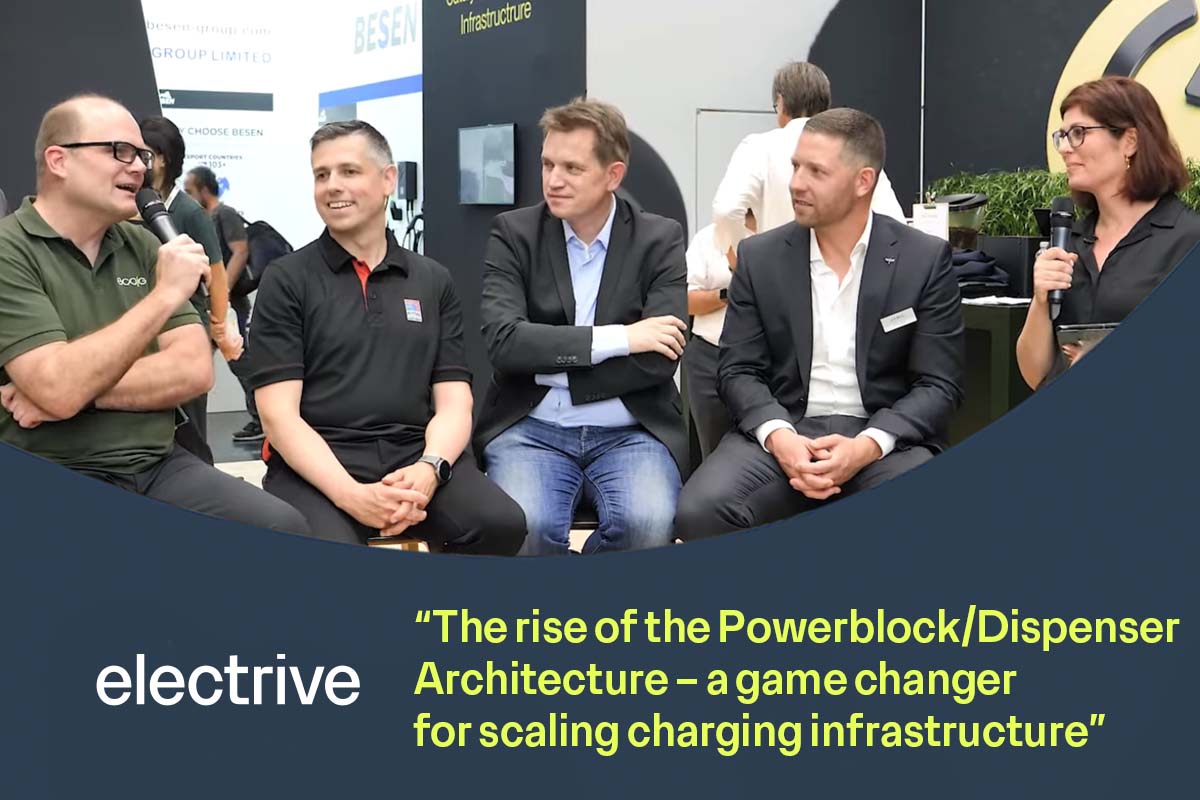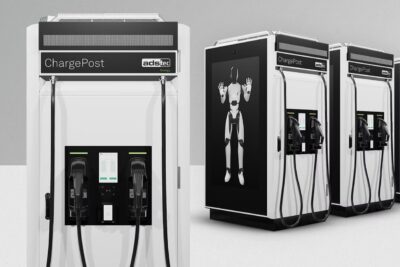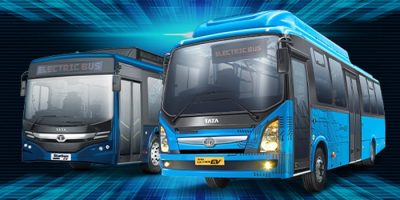Panel discussion: “The rise of the Powerblock/Dispenser Architecture – a game changer for scaling charging infrastructure”
Four of the participating companies, namely EcoG CEO Jörg Heuer, Friedel Meyer, Business Unit Director at Jabil, Raphael Görner, VP Energy Solutions at Rittal, and Wulf Schlachter, Consultant at DXBe, came together at the EcoG boot at the Power2Drive in Munich in June to talk about the advantages and challenges of their approach.
“We see that as soon as you have more than six parking places to electrify, you’re starting to reduce the TCO by 20 to 25%,” Heuer explained one of the major advantages of the ‘Powerblock/Dispenser Architecture.’ However, he also pointed out that it is “a game changer,” because it shows that “it is no longer just about the charger. It is about how you scale architectures, how you scale production and how you integrate these aspects.” Watch our interview with Jörg Heuer here.
The ‘Powerblock/Dispenser Architecture’ makes charging infrastructure easier to install, as groundwork is not needed for every charge point—only for the central power dispenser. Several DC chargers can be connected to the powerblock, which distributes energy among the so-called dispensers or charge points.
Another difference compared to a standalone charger is that the latter needs its own power electronics with the associated peripherals, such as cooling. This results in a corresponding space requirement and oversizing of the components. In the case of EcoG’s approach, the chargers only need to be able to communicate with the powerblock.
This system approach is suitable for opportunity charging, for company car parks and for logistics, i.e. not only for cars but also for trucks. Another advantage is its scalability.
It could also be a solution to the infamous problem of getting a grid connection. As Schlachter pointed out, the average waiting time for a grid connection in Europe is nine to 12 months, while it can even take longer than 18 months in the UK. By setting up a powerblock, charge point operators (CPOs) can apply for a minimum amount of power while still operating DC charging infrastructure. According to Schlachter, a 22-kilowatt AC connection should do the trick. They could even operate “in a kind of off-grid mode,” he said.
“So off-grid means, you can combine these with photovoltaic and store the energy in battery that then power the powerblock,” Schlachter explained, adding that it is “nearly off-grid,” as 100 per cent off-grid is not allowed in most European countries.
German company Rittal is one of the partners to make ‘Powerblock/Dispenser Architecture’ a reality. Rittal is in charge of the modular platform installed in the power distribution cabinets needed for this type of charging infrastructure. Görner stressed that standardisation is a big issue for these new kinds of approaches.
“I think it is really about having a reference architecture documented, a digital twin, so that you can easily adapt to the different market requirements,” he said. “We really look forward to providing this as an industry standard project, this reference architecture, so that it’s easily adaptable and we have these electrifying standards that we can roll out into the world.” Watch our interview with Raphael Görner here.
According to EcoG CEO Heuer, the first projects are planned in Europe and North America before the end of the year. However, he did not specify where exactly. But he is quite optimistic, saying he expects this kind of architecture to account for 80 per cent of charging infrastructure by 2030. You can also watch our interview with Jörg Heuer here.
So cost, grid connections, standardisation – these are all aspects of the ‘Powerblock/Dispenser Architecture.’ And there is another, as Friedel Meyer from Jabil points out: localisation. Jabil is an American company with manufacturing capabilities all over the world and thus ready to produce according to local requirements, so projects qualify for funding, for example. We also interviewed Meyer ahead of the panel. Watch the full interview here.





0 Comments